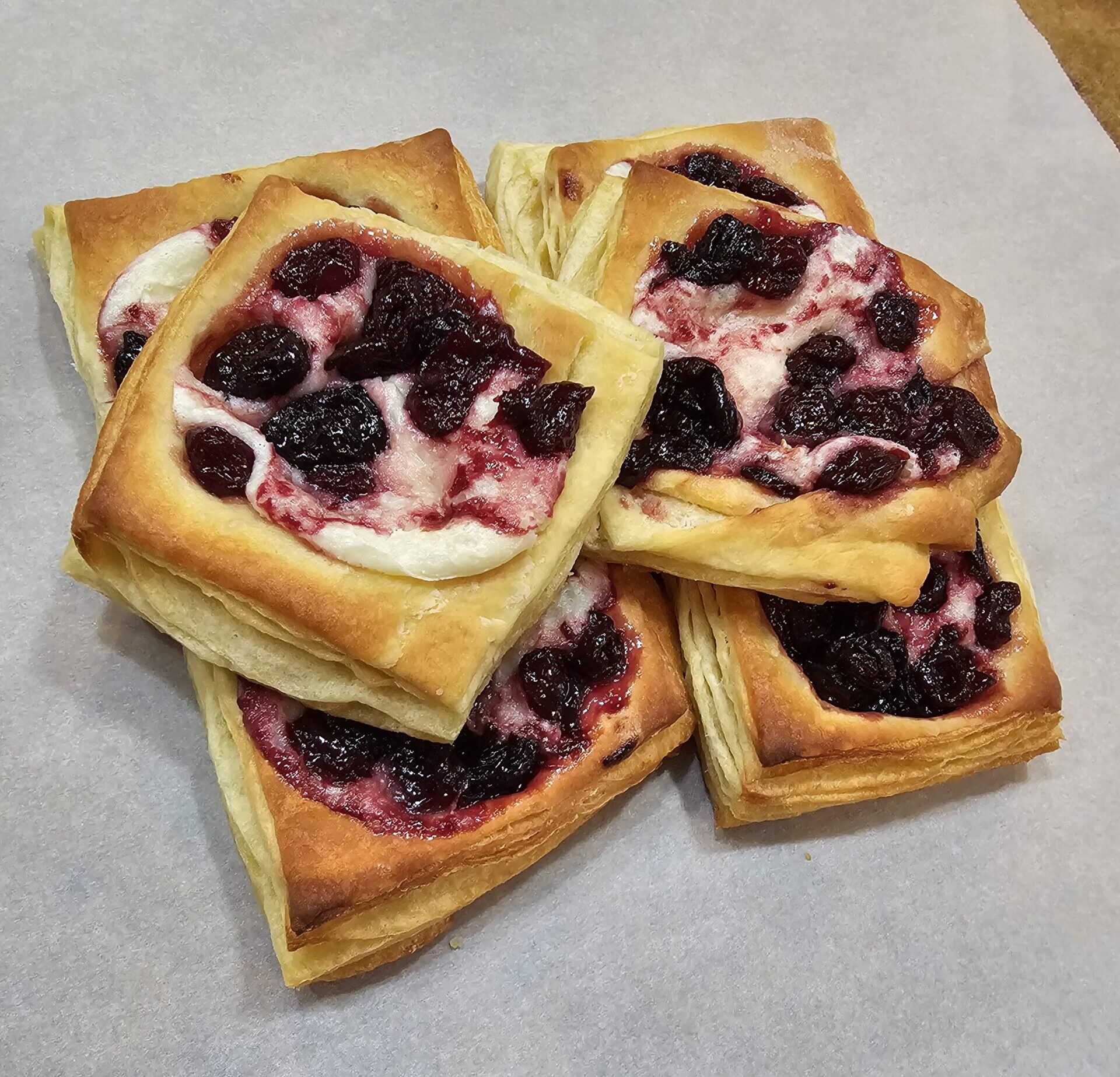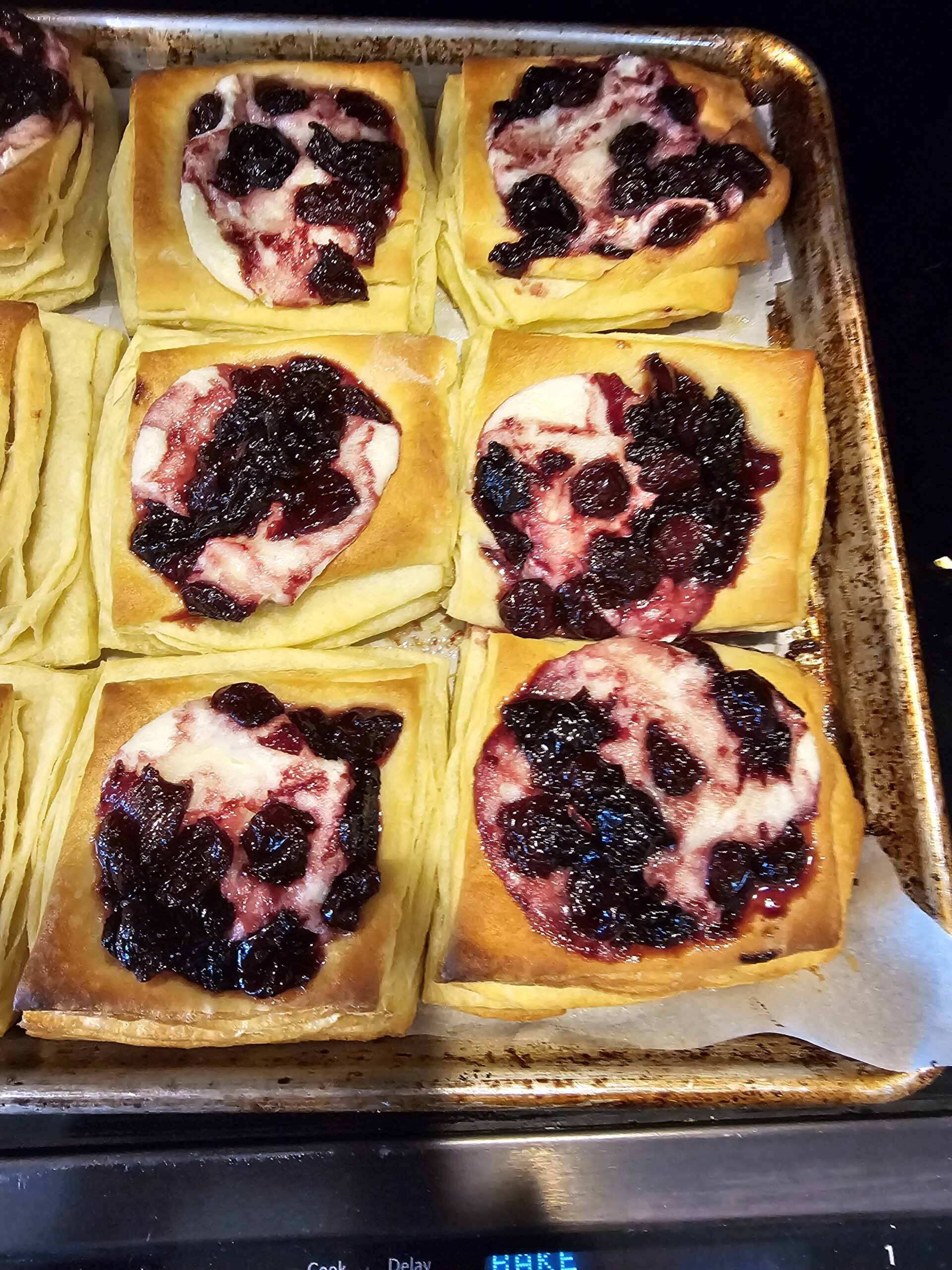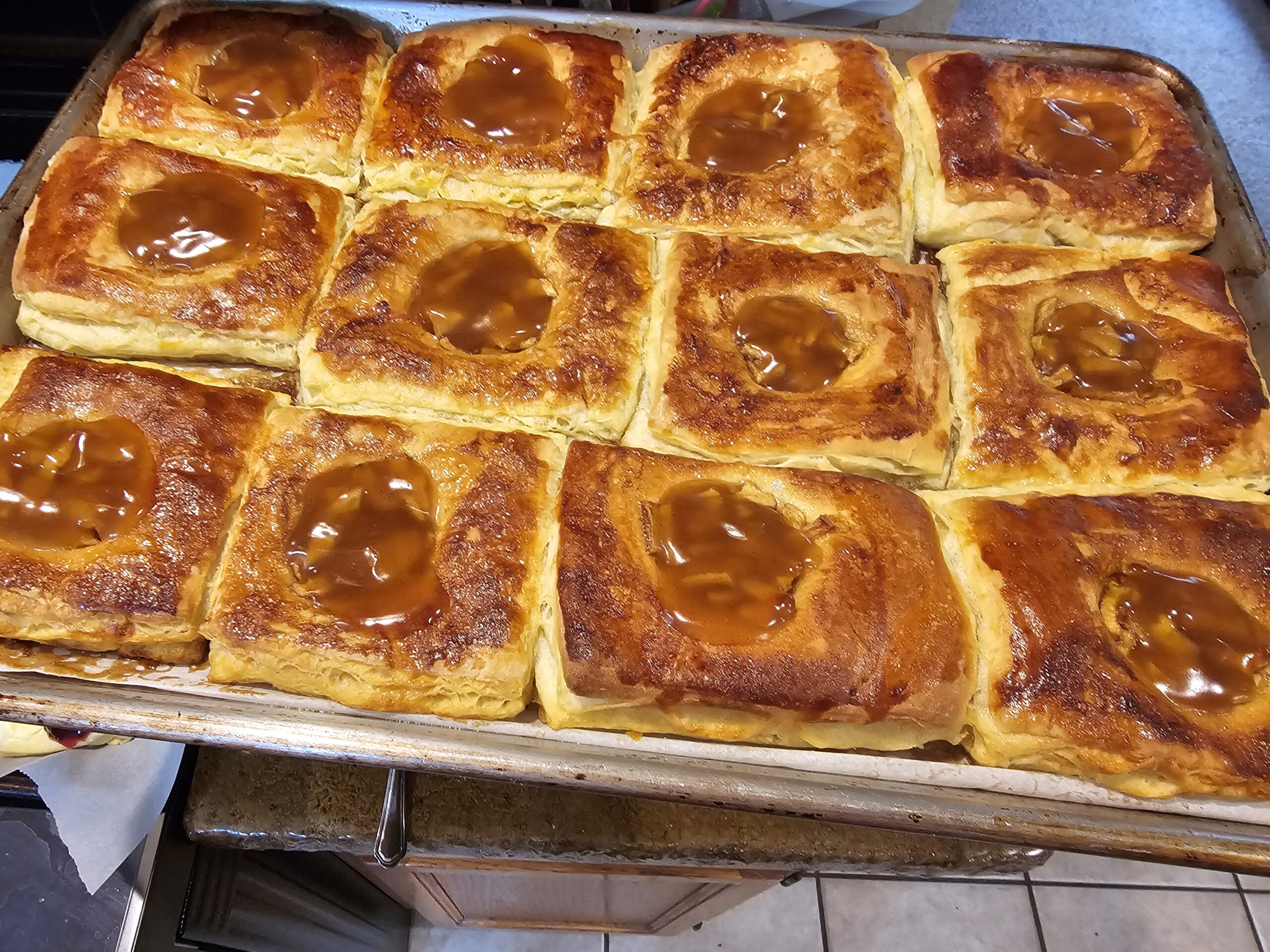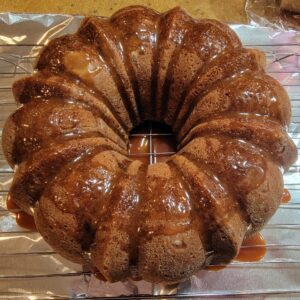Danish
$20.00
Made from croissant dough, these little squares of delightness will help make any Monday Morning (or any other morning) special. Granted, there aren’t any rules, and we won’t tell, so eat them in the car on your way home!
Warning: You will need napkins!
Order Size: 6 Danishes
Description
Baked Danish pastries, often simply referred to as “Danishes,” are a type of laminated pastry known for their flaky texture, buttery flavor, and often sweet fillings. Originating from Denmark, these pastries have become popular worldwide, particularly in bakeries and coffee shops.
Key Characteristics
- Texture:
- Flaky and Crisp: Danish pastries have multiple layers of buttery dough, resulting in a flaky and crisp exterior.
- Tender Interior: Inside, they are tender and airy, with a slightly chewy texture due to the layering process.
- Flavor:
- Rich and Buttery: The dough itself is rich with butter, giving it a luxurious taste.
- Sweet and Savory Fillings: Danishes often contain a variety of fillings, ranging from sweet fruits and custards to savory cheeses and meats.
- Appearance:
- Golden Brown: They are typically golden brown when baked, with a glossy finish from an egg wash.
- Decorative Shapes: Danishes come in various shapes, such as circles, pinwheels, braids, and envelopes, each often highlighting the filling in the center.
Common Fillings and Toppings
Danish pastries are versatile and can be filled and topped with a wide range of ingredients:
- Sweet Fillings:
- Fruit: Common fillings include apple, cherry, blueberry, and raspberry.
- Custard: Vanilla custard or pastry cream is a popular filling.
- Jam: Various fruit jams and preserves are often used.
- Cream Cheese: Sweetened cream cheese is a classic filling.
- Savory Fillings:
- Cheese: Savory cheeses like cream cheese or feta.
- Meats: Ham, bacon, or sausage.
- Toppings:
- Icing: A drizzle of icing or glaze often finishes sweet Danishes.
- Nuts: Almonds, pecans, or other nuts may be sprinkled on top.
- Powdered Sugar: A dusting of powdered sugar adds a touch of sweetness and visual appeal.
Culinary Uses
Danish pastries are enjoyed in various contexts:
- Breakfast and Brunch: Often served as a part of a continental breakfast or brunch spread.
- Snacks: Enjoyed as a sweet treat with coffee or tea.
- Desserts: Some Danishes are rich enough to be served as dessert.
Variations
Danish pastries come in many regional and creative variations:
- Kringle: A larger, ring-shaped Danish pastry often filled with almond paste or fruit.
- Spandauer: A traditional Danish pastry with a pocket of custard or jam in the center.
- Bear Claw: A filled Danish pastry shaped to resemble a bear’s claw, usually with almond paste and sliced almonds.
Cultural Significance
While Danish pastries are enjoyed worldwide, they hold special significance in Denmark and other Scandinavian countries:
- Traditional Bakeries: In Denmark, traditional bakeries pride themselves on their variety and quality of Danish pastries.
- Festive Occasions: Danishes are often enjoyed during holidays and special celebrations.
Baked Danish pastries are celebrated for their buttery, flaky layers and rich, varied fillings. Whether enjoyed as a breakfast treat, a snack, or a dessert, they remain a beloved pastry around the world.
Only logged in customers who have purchased this product may leave a review.








Reviews
There are no reviews yet.